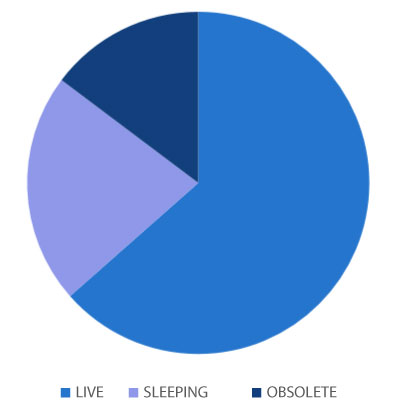Parts can be classified based on their movement, i.e. how often they are sold. A part is classified as LIVE if it has sold in the past 1 to 6 months; as SLEEPING if it has not sold for 6 to 12 months; and as DEAD or OBSOLETE if more than a year has passed since its last sale.
This is an essential report to avoid losing money related to:
1. Opportunity cost
Immobilized inventory is money that is on the shelves without producing any profit.

Let’s look at an example. A dealership has a parts inventory of $3,000,000, 25% of which is classified as obsolete. Considering a basic 5% return on investment, the dealership is losing out on $37,500 per year.
2. Selling parts as scrap
Parts that become obsolete must be periodically scrapped, i.e. sold at a loss. This practice helps fix your inventory health, but every sale incurs a loss for the dealership.
3. Expenses
Dead inventory incurs in unnecessary costs: insurance; warehouse space; time and wages of employees who must move these parts; shipping costs to move dead inventory between stores.
Do you know Autologica Sky DMS?
Autologica Sky DMS is a software for the automotive and machinery industry with all the functions and integrations that professional dealerships need.
» Request a demo
Strategies to improve this KPI
1. Purchase management
It is important to start buying parts based on statistical methods, parts purchase suggestion features of your DMS. Good purchase management considers issues such as sales ranking, demand volume, popularity, and seasonality.
2. Monitor inventory health
It is vital to periodically monitor the health of the inventory using ABC Crossover Report techniques. For example, you can detect obsolete parts that have a high impact on your inventory’s overall value, and quickly put corrective measures in place.
3. Improve management of pending parts
When a supplier sends us parts, it may be difficult to determine if they are for inventory or if they were requested by a customer.
If they are parts for a customer and that customer does not come in, those parts may remain sleeping on the shelf and will soon add to the dealership’s immobilized stock.
To avoid this, a dealership must load all customer orders into the DMS, and when parts arrive at the dealership, the system should alert the Parts staff which customer are expecting them. Customers can the be quickly contacted so they can stop by the dealership.






